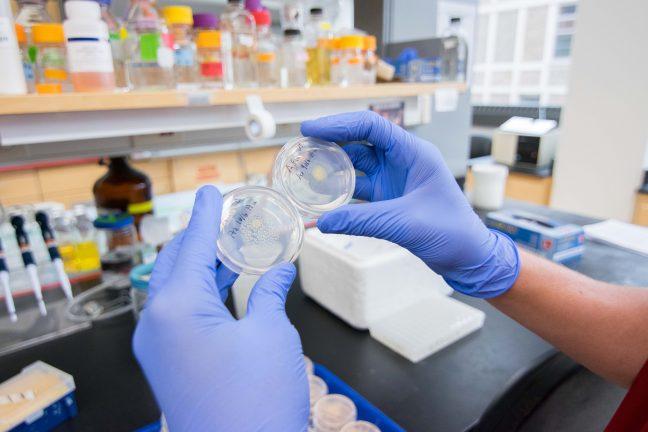University of Wisconsin researchers may have found a new way to understand and combat the mysterious causes of diseases, like multiple sclerosis, that impair normal brain functions.
A UW study found renewed but thin myelin sheaths are able to restore the defective nervous system for years. The myelin sheath is the protective membrane layer wrapped around nerve cells that increases response time to the nervous system. Any damage to the myelin sheath can affect and deteriorate everyday speech, cognitive awareness or the ability to move, and sometimes can make normal neurological functions impossible.
The study was published in the Proceedings of the National Academy of Sciences by a team of UW researchers led by Dr. Ian Duncan of the UW School of Veterinary Medicine. Duncan says their research focuses on an indicator of myelin repair, believed to be in thin myelin sheaths.
“This whole idea has been challenged recently in some papers and high impact scientific journals, to the point where we would be left without any biomarker at all of what myelin repair looks like in the central nervous system,” Duncan said.
UW researchers aim to understand why some cells turn cancerous
The study focused on a genetic disorder that naturally affects Weimaraners, a dog breed whose pups develop a severe tremor and loss of coordination as early as 12-to 14-days old, according to the study. The condition in the pups is due to the delayed development of myelin sheath in the dog’s central nervous system.
“There’s only one of really telling if the brain has been remyelinated,” Duncan said. “That is to look at the thickness of the myelin sheath.”
The pups then experience loss of coordination and tremors. Most of the time in the Weimaraners, the symptoms gradually diminish and disappear completely by three to four months old.
In this particular study, two Weimaraner pups were patients at UW 13 years ago. Duncan contacted the owners after the dog’s lives had ended so he was able to retrieve samples of their spinal cord tissue. Even after 13 years, the dogs were deemed “neurologically normal,” Duncan said.
Astrobotany gets a new look: New research generates fashion line
“13 years is a long time to remain the same, so we see that they are stable and secure,” Duncan said. “They also supported functions that animals which had the neurologic defect, to begin with, made this thin myelin which promoted recovery, they were normal up to 13 years of age.”
These findings are bringing hope to those with diseases that affect the myelin sheaths, like MS.
The study was in part funded by MS Hope for a Cure, a foundation created by Elissa Levy in 2007, who was diagnosed with a progressive form of the disease in 2002.
MS Hope for a Cure is based in New York and mainly supports local MS centers and funds research that has to do with the progressive form of the disease, like Duncan’s.
“[Our] goal is to fund projects where we would get the best bang for our buck,” Levy said. “As a small organization, we’re able to do things much quicker than most large organizations.”
When she started the foundation, there was a lot of funding going toward remitting MS, Levy said. However, now she wants to make a push toward finding more medications that help with the progressive form of the disease since most medications help with the relapsing-remitting form.
Million-dollar initiative looks to help revolutionize microbiome research at UW
When she was diagnosed, there were 3 FDA approved medications. Now there are 12 to help with relapsing-remitting, Levy said, but there’s only one medication that helps with progressive MS.
“It would just be so wonderful to see a medication come on board that actually has been proven to show a reverse in disability,” Levy said.
Through research like Duncan’s Levy hopes to make medications like these possible to help others with the progressive form of MS.
MS Hope for a Cure holds local fundraisers to help raise money for things like research, Levy said. A fear that Levy has is government dollars used for research decreasing, but she believes now is the time to invest in medical research.
“I feel really strongly that this age of technology is what is really making the next set of medical advances possible,” Levy said.

















